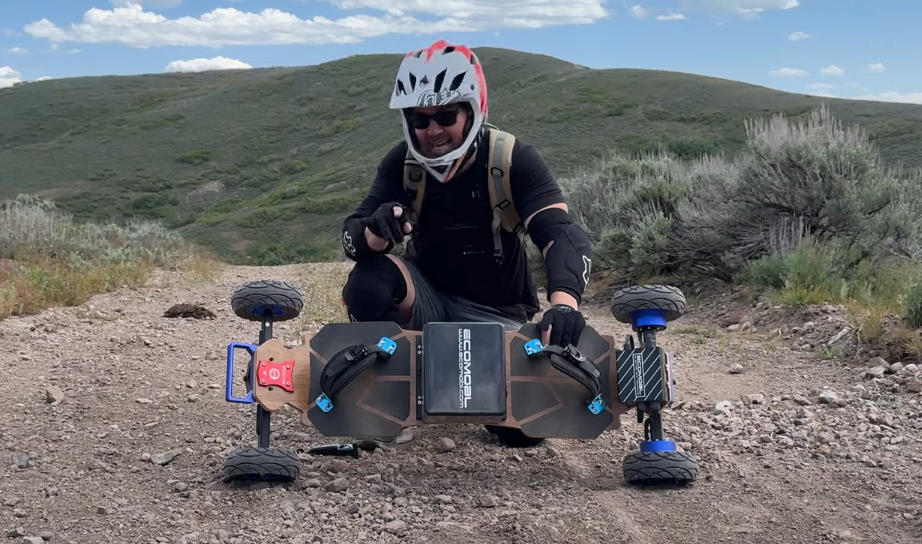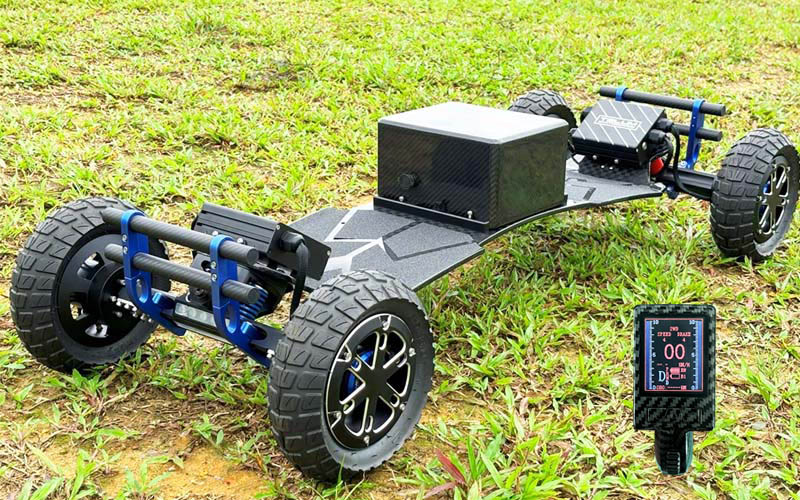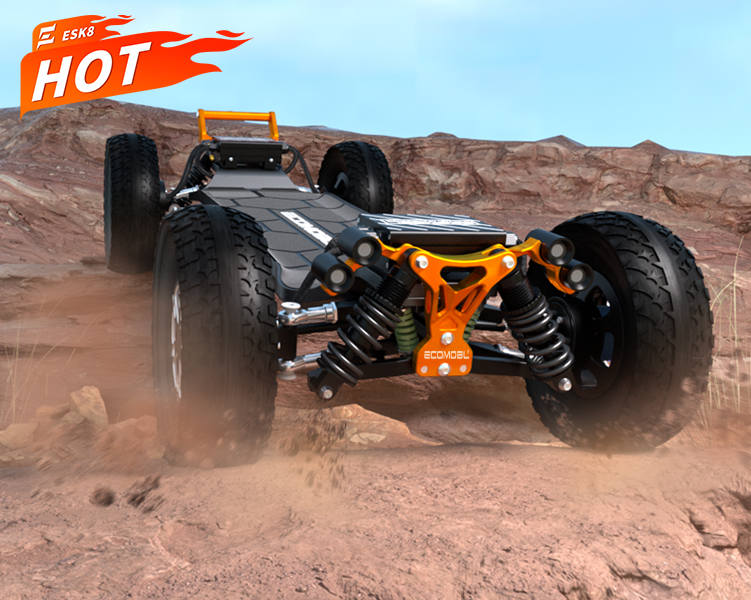Skateboards come in different builds to match specific riding styles and environments. The same goes for electric skateboards—some are designed for city cruising, while others are built tough enough to handle dirt, gravel, grass, and rugged trails.
If you’ve ever thought skateboarding is only for smooth pavement, think again. With the right setup, electric skateboards can handle rough roads, hills, and even forest trails. That’s where the best all-terrain electric skateboards come in.
Ecomobl.com specializes in creating durable, powerful, and versatile all-terrain and off-road electric skateboards built for riders who crave adventure. Let’s break down the key factors that make these boards the best choice for off-road riding and review some of the top Ecomobl models.
Key Features to Look for in the Off-Road Electric Skateboard
1. Trucks
For stability and maneuverability, double kingpin trucks or suspension trucks are a must. Ecomobl skateboards are equipped with high-quality trucks designed to deliver smooth carving, better turning radius, and reduced wheel bite risk—perfect for off-road and all-terrain riding.
2. Wheels
The electric skateboard off-road requires large, durable wheels. Ecomobl boards feature 150mm airless rubber wheels and pneumatic tire options for conquering gravel, sand, and grass. With no need to constantly check air pressure, their airless designs also reduce maintenance while maximizing traction.
3. Battery
When it comes to power, battery capacity is everything. Ecomobl’s lithium-ion battery packs (such as 12S3P and 12S5P setups) deliver a range of 15–30+ miles, depending on terrain and riding style. That makes them some of the electric all-terrain skateboards for long-distance adventures.
4. Deck Design
Ecomobl decks are carefully engineered with drop-down shapes and reinforced structures, lowering the rider’s center of gravity for more control on bumpy surfaces. Whether you’re hitting dirt trails or city streets, the deck design ensures stability and comfort.
3 Best All-Terrain Electric Skateboards from Ecomobl.com
1. Ecomobl Ripper Pro 2WD & 4WD Electric Skateboard

This versatile board is a rider favorite thanks to its balance of power, design, and durability.
Key Features:
-
12S4P lithium-ion battery with a range of 40-45 km
-
180mm x 60mm wheels built for dirt, sand, and asphalt
-
Integrated LED lighting (taillights, body lights, and headlights) for night rides
Why it’s one of the best all-terrain skateboards: It offers a mix of style and performance, making it an excellent choice for both day and night adventures.
2. Ecomobl M24 Pro 4WD Off-Road Electric Skateboard
For serious riders who want maximum off-road power, the M24 Pro is a beast.
Key Features:
-
4WD system for unbeatable traction on steep and rugged trails
-
High-capacity 12S5P lithium-ion battery with extended range
-
Real suspension system for shock absorption and smooth control
-
Designed for extreme hills, gravel paths, and forest terrain
Why it’s the best electric skateboard off-road: Its 4WD design ensures unmatched climbing ability and stability on tough trails.
3. Ecomobl Telum BA Hybrid Electric Skateboard

The Telum BA blends speed, stability, and versatility, making it one of the best all-terrain electric skateboards available.
Key Features:
-
Advanced hybrid design for both urban roads and off-road riding
-
Long-range battery with strong endurance for extended sessions
-
Reinforced deck and suspension trucks for all-terrain versatility
-
Smooth acceleration with excellent hill-climbing power
Why it’s the best electric off-road skateboard for versatility: It’s designed for riders who want one board that performs on every surface, dirt, grass, gravel, and city streets.
Why Choose an Ecomobl All-Terrain Electric Skateboards?
-
Durability: Built with premium materials that withstand rough terrains.
-
Performance: Strong motors and high-capacity batteries deliver speed, range, and climbing power.
-
Safety: LED lights, sturdy trucks, and reliable braking systems keep riders in control.
-
Low Maintenance: Airless wheels and reinforced parts reduce upkeep needs.
Whether you’re searching for the best off-road electric longboard, the best electric skateboard all-terrain, or simply the best all-terrain skateboard for mixed surfaces, Ecomobl offers premium boards designed to perform where others can’t.
Final Thoughts
Adventure doesn’t stop where the pavement ends. With the best all-terrain electric skateboards from Ecomobl.com, you can conquer sand, dirt, grass, and rugged trails with confidence.
If you’re ready to experience the thrill of off-road riding, explore Ecomobl’s collection of all-terrain electric skateboards—where performance, power, and durability meet.
👉 Visit Ecomobl.com today to find the best electric off-road skateboard for your next adventure.
Frequently Asked Questions
Can electric skateboards go on dirt, grass, and gravel paths?
Yes, off-road electric skateboards are designed to handle dirt, grass, gravel, and other uneven surfaces. They typically feature larger pneumatic wheels, stronger motors, and flexible suspension systems that provide better grip and stability on rough terrain.
How far can an off-road electric skateboard go on a single charge?
The range of an off-road electric skateboard depends on factors such as battery size, rider weight, speed, and terrain. On average, most models can travel between 15 and 30 miles per charge, though premium boards with larger batteries may go even further.
Is a 4WD electric skateboard better for off-road riding?
Yes, a 4WD (four-wheel-drive) electric skateboard offers better traction, torque, and climbing power than a 2WD model. This makes it ideal for steep hills, loose gravel, or muddy paths. However, 4WD boards are usually heavier and more expensive, making them best suited for riders who require maximum off-road performance.
How do you maintain an off-road electric skateboard for long-lasting performance?
To keep your board in top condition, clean the wheels and trucks after riding on dirt or mud, check tire pressure regularly, and tighten bolts when needed. Avoid submerging the board in water, and store it in a dry place. Properly charging the battery and occasionally servicing the bearings will also extend the skateboard’s lifespan.





